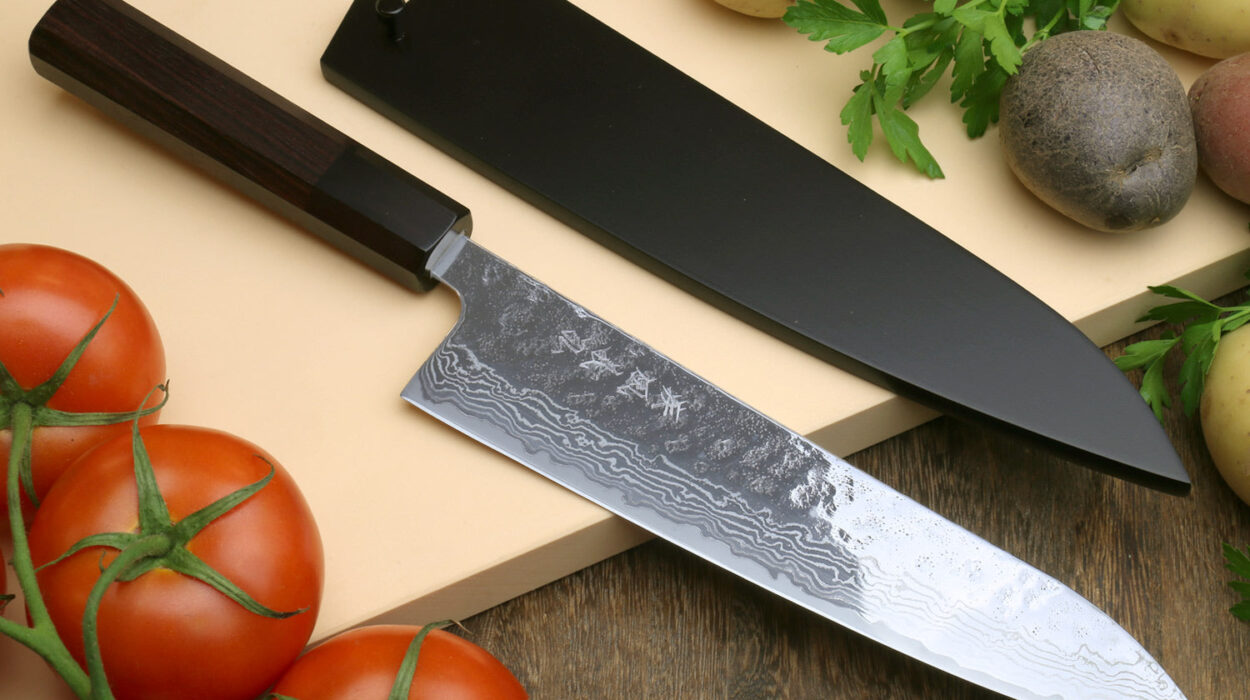The art of crafting traditional Damascus knives is steeped in rich history and meticulous craftsmanship. These knives, known for their distinctive wavy patterns and unparalleled durability, have captured the admiration of both culinary professionals and enthusiasts alike.
The term ‘Damascus’ has become synonymous with strength and beauty, embodying a tradition that dates back centuries. Dive into the fascinating world of these remarkable blades, understanding why they continue to be a favorite in kitchens around the globe.

The Rich History of Damascus Steel
Originating from the Near East, the craft of making Damascus steel is believed to have started around 300-500 AD. The name itself is derived from the capital of Syria, a key trading and crafting hub in medieval times. The famed qualities of Damascus steel knives made them a prized possession for warriors and chefs alike.
Many argue about the exact methods used by ancient smiths, but the allure of their mystery only adds to the allure of these blades. Today’s scientific studies delve deep, exploring if modern technology can truly replicate the legendary material.
The Art of Crafting Damascus Knives
The creation of traditional Damascus knives is an intricate process involving the repeated folding and forging of steel alloys. Each layer is deliberately welded and hammered to ensure resilience and sharpness. This unique approach does not just build strength but also results in the captivating patterns that define these knives.
The balance between function and visual appeal makes the craftsmanship of these knives a true art form. Every Damascus blade tells its own story, with swirling patterns akin to fingerprints, ensuring no two blades are exactly alike.
Modern Uses and Popularity
The popularity of Damascus knives has transcended time, continuing to thrive in modern kitchens. For chefs, these knives are not merely tools but cherished companions in culinary creation. From expert slicing to superior edge retention, the benefits are numerous, making them an essential item for professionals.
Why Chefs Love Them
Professional chefs adore traditional Damascus knives for their razor-sharp edges that enhance precision cutting, whether they are mastering the art of crafting authentic dishes or preparing elaborate cuisines. Additionally, the aesthetic appeal of the patterned blade speaks volumes in a world that appreciates artistry as much as functionality.
The Aesthetic Appeal
Beyond functionality, the visual beauty of Damascus knives adds to their allure. The swirling patterns are not only an indication of the knife’s strength but also symbolize a bridge connecting the modern chef to ancient traditions. This unique combination of utility and design makes owning a Damascus knife a matter of pride.
Buying Guide for Traditional Damascus Knives
For those seeking to own a piece of history, selecting the right Damascus knife involves considering key factors like blade material, handle design, and price. Opting for a trusted brand can ensure authenticity and quality, allowing the buyer to enjoy true craftsmanship in their kitchen.
Choosing the Right Blade
The blade is the heart of any knife, and in the case of traditional Damascus knives, selecting one made from high-quality steel is crucial. Experts suggest seeking knives that highlight the distinctive water-like patterns indicative of genuine Damascus craftsmanship.
Handle Design Matters
A well-balanced handle provides both comfort and control, enhancing one’s culinary experience. Handles crafted from premium woods or stabilized materials complement the strength and elegance of the Damascus blade, offering both beauty and functionality.
Price and Budget
While traditional Damascus knives can be a significant investment, their longevity and multifaceted capabilities make them worthwhile. Prospective buyers should research well to find a knife that balances budget without compromising on quality.
Caring for Your Damascus Knife
Maintaining a Damascus knife’s performance and appearance requires proper care. The following tips can help in keeping these prestigious knives in pristine condition for years:
- Regularly sharpen the blade using appropriate tools to maintain its sharpness.
- Avoid dishwasher cleaning to prevent damage; hand wash and dry immediately.
- Store separately or use protective sheaths to avoid accidental edge chipping.
Sharpening Techniques
While maintaining sharpness is vital, it requires more than a regular sharpening steel. Professionals often recommend using whetstones or securing services of an expert sharpener familiar with Damascus techniques.
Cleaning and Storage
Due to its unique properties, hand washing is advised to preserve the blade’s integrity. Furthermore, many chefs favor oiling the blade to prevent rust and maintain its impressive appearance. Properly storing the knife also prolongs its lifespan, avoiding direct impacts that may harm the blade and patterns.
Conclusion
Overall, traditional Damascus knives represent a fusion of history, art, and function. Chefs across the globe value these knives for their superior performance and captivating aesthetics. As such, these knives are more than just kitchen utensilsthey are pieces of history and art.
To learn more about the fascinating world of Damascus knives, you might find this in-depth history guide insightful.

FAQ
Do Damascus knives require special care?
Yes, to maintain their quality, Damascus knives need regular sharpening, hand washing, and appropriate storage.
Are all Damascus knives real?
Not all knives labeled as Damascus are genuine. It’s crucial to research and buy from reputable sources to ensure authenticity.
Why do chefs prefer Damascus knives?
Chefs appreciate Damascus knives for their superior cutting ability, durability, and aesthetic appeal.
This article contains affiliate links. We may earn a commission at no extra cost to you.


